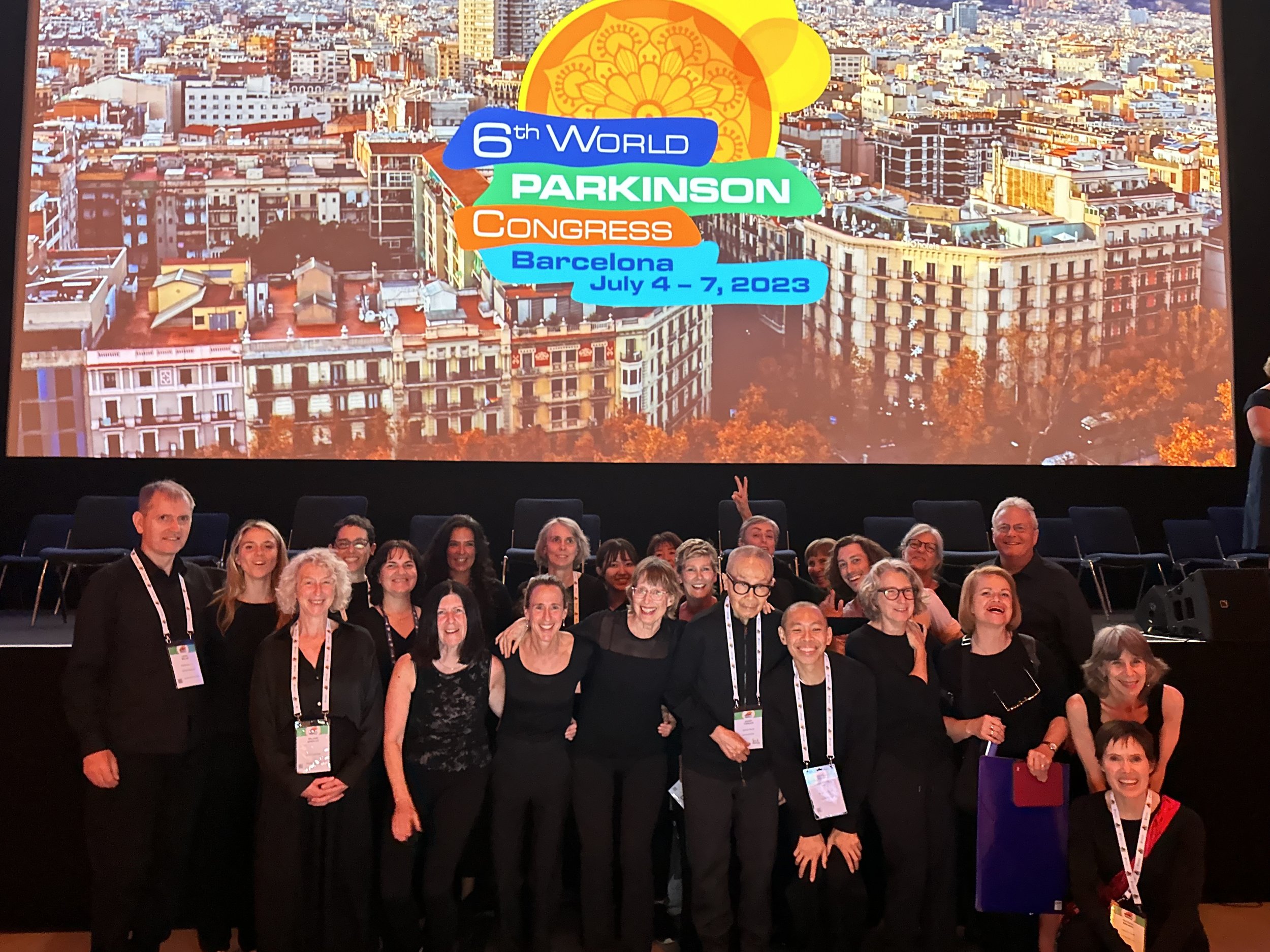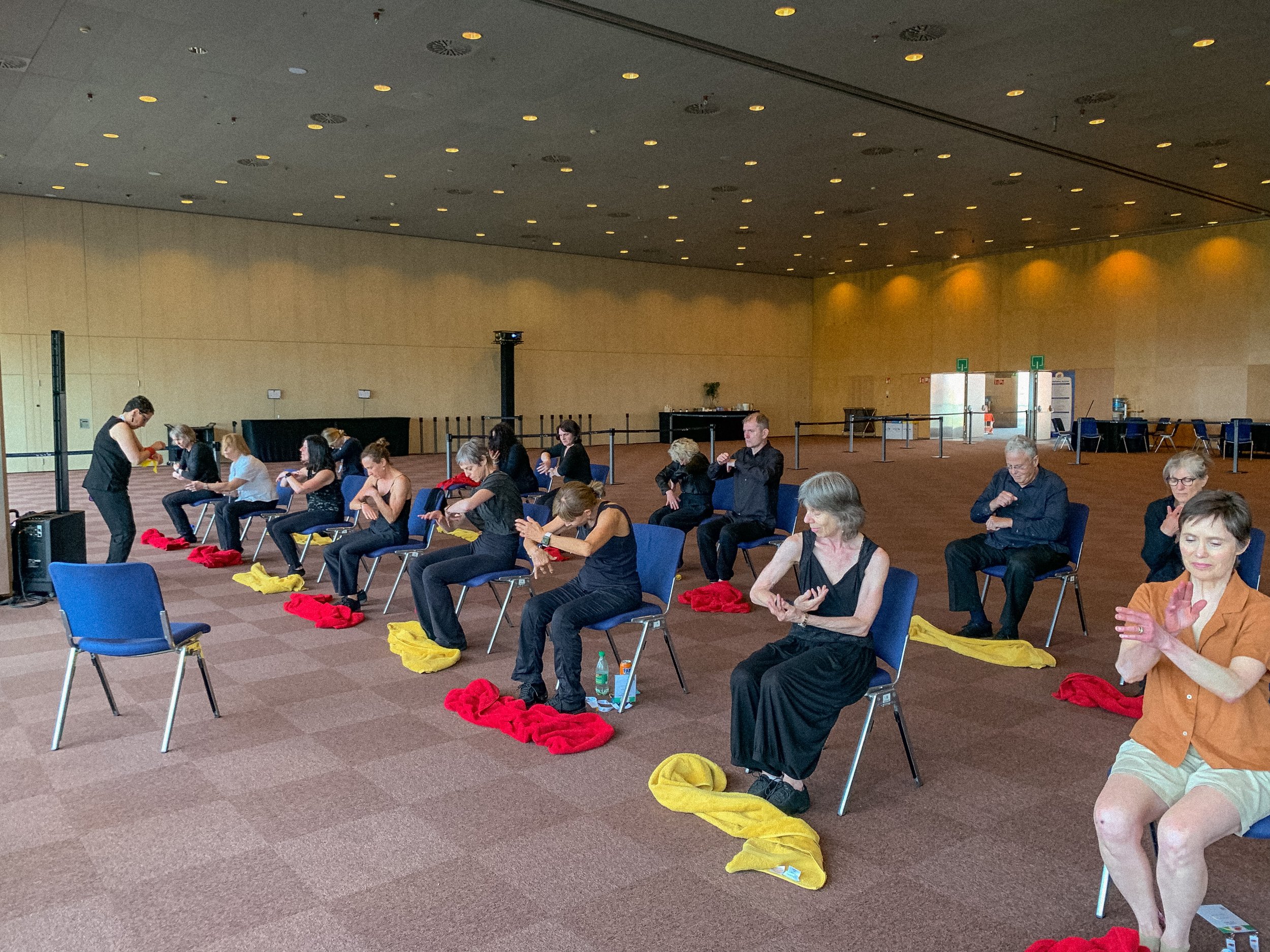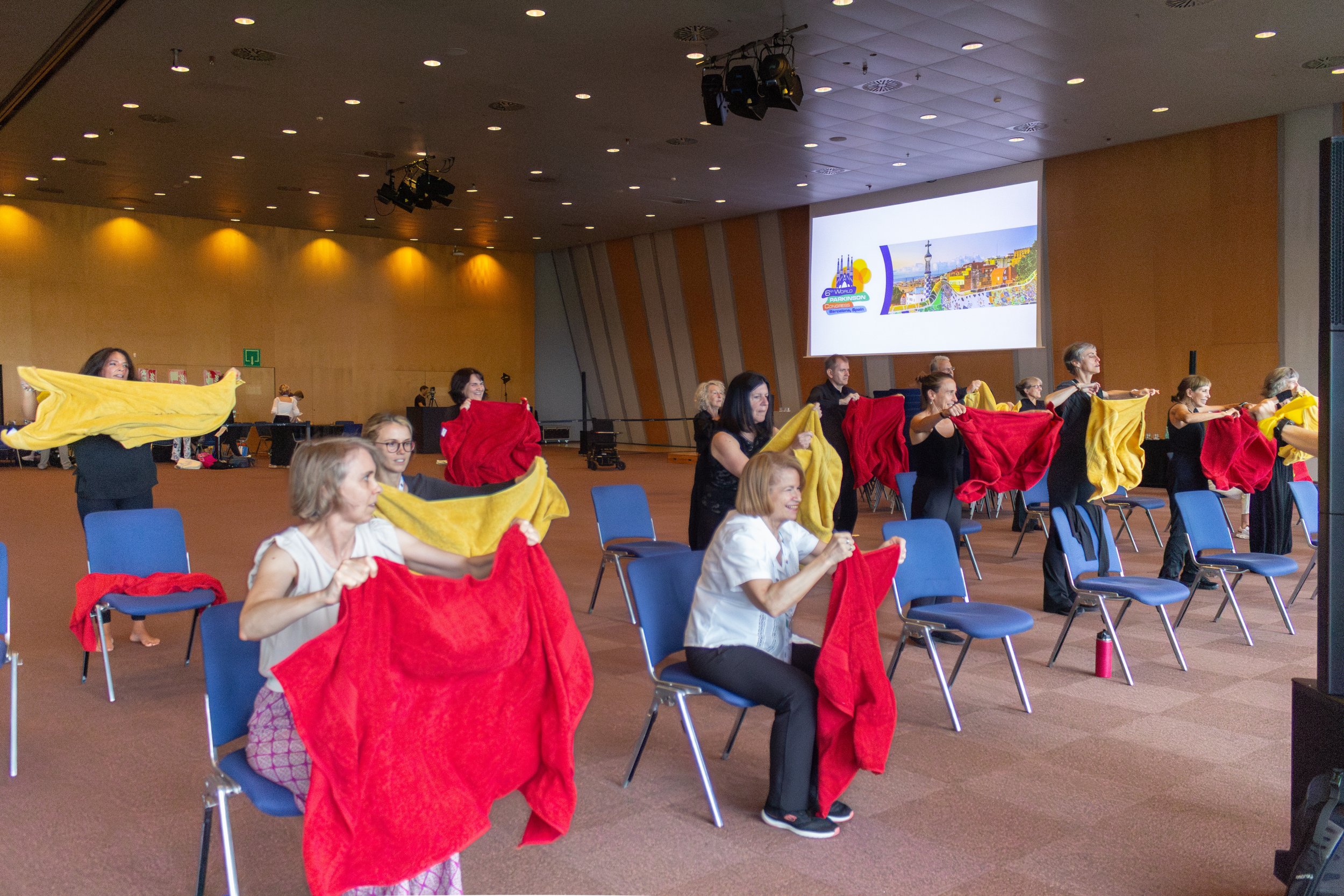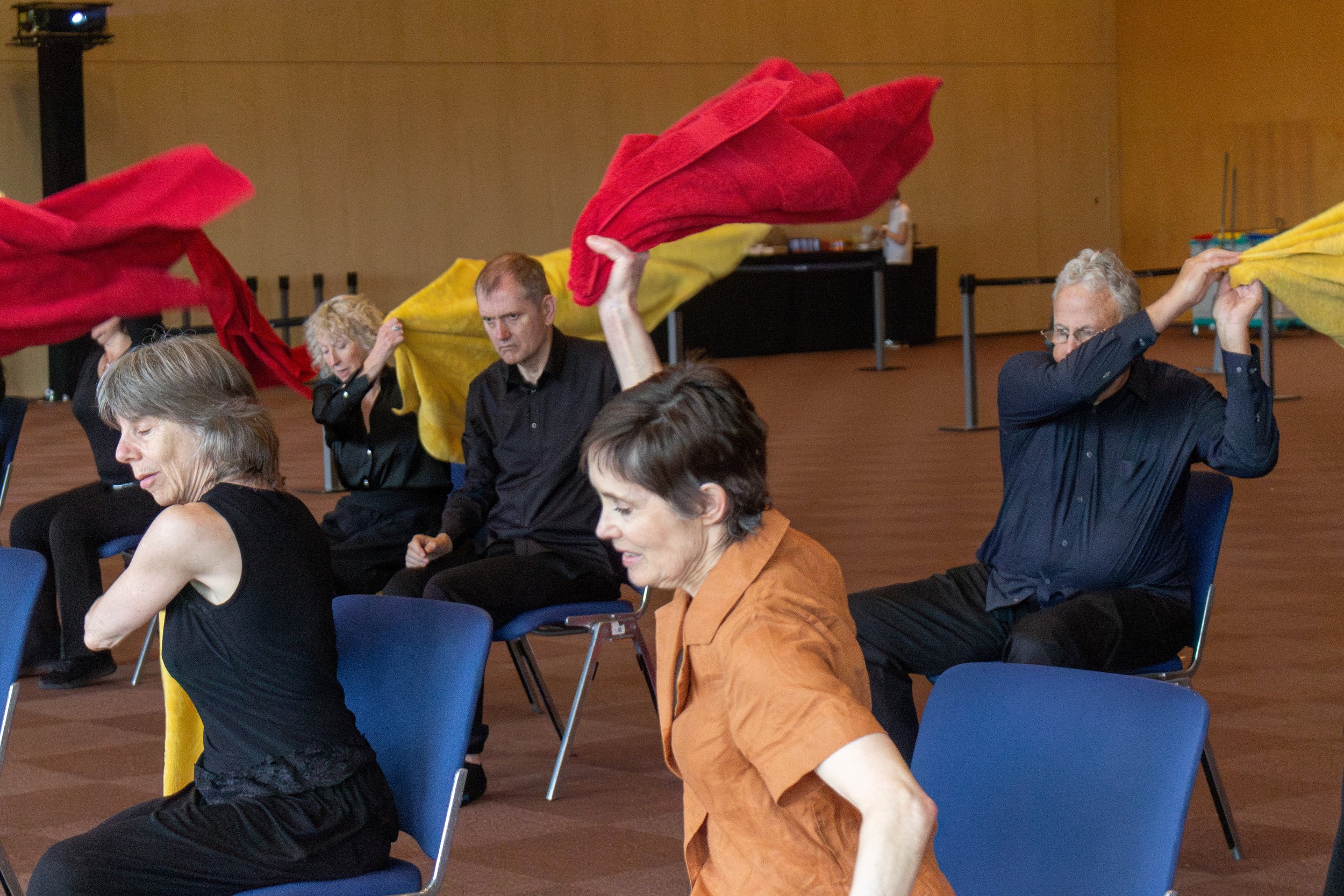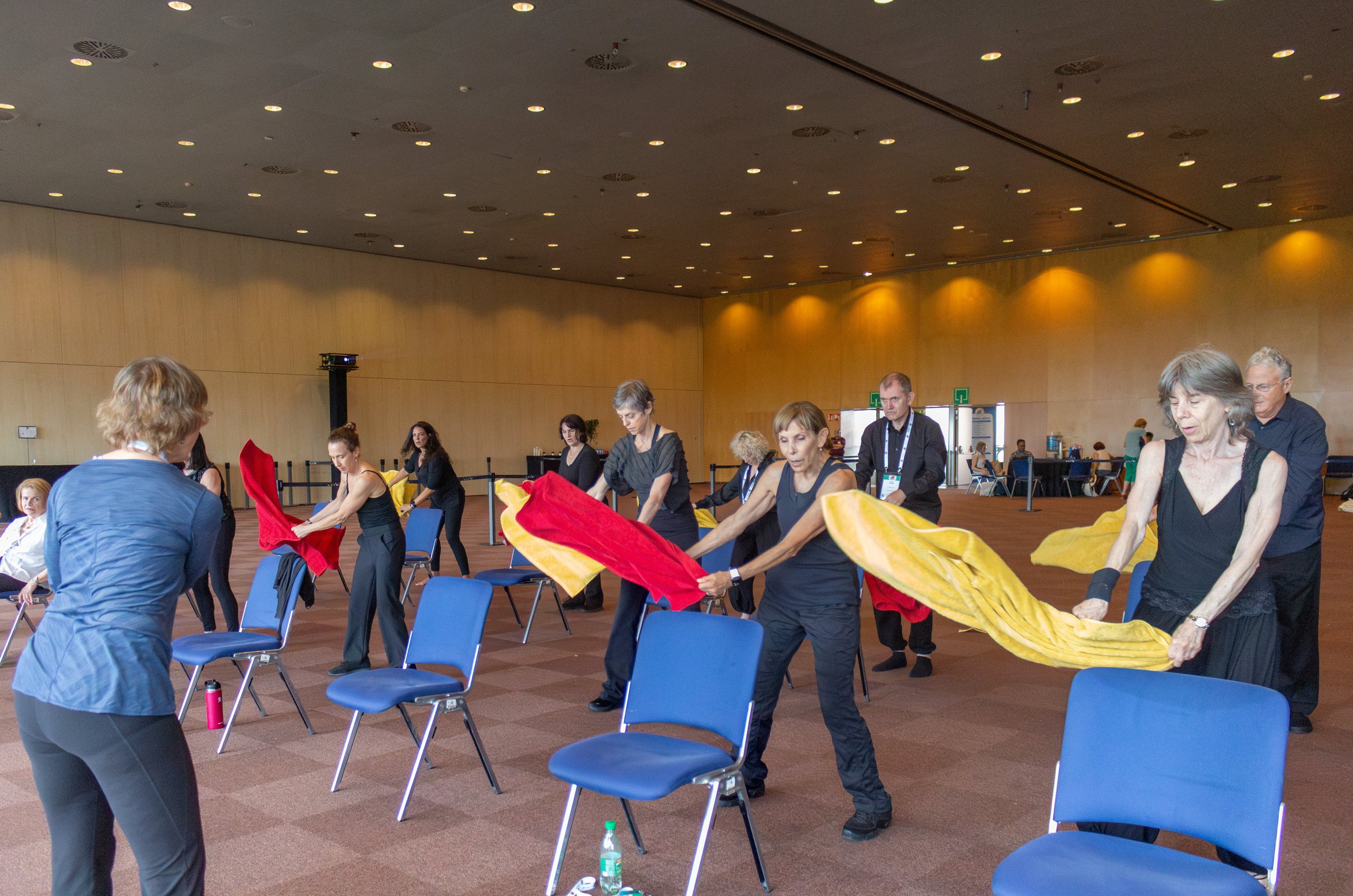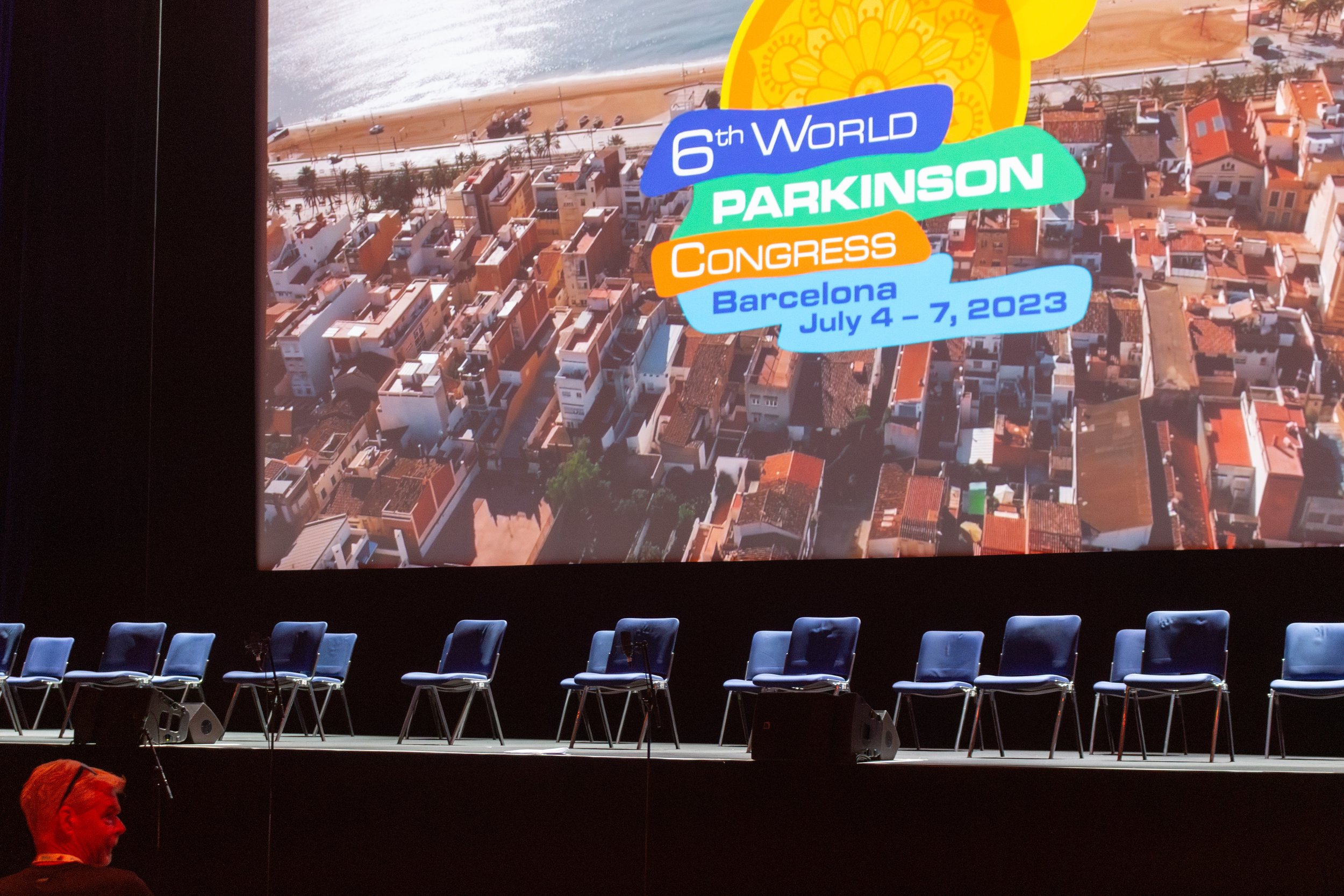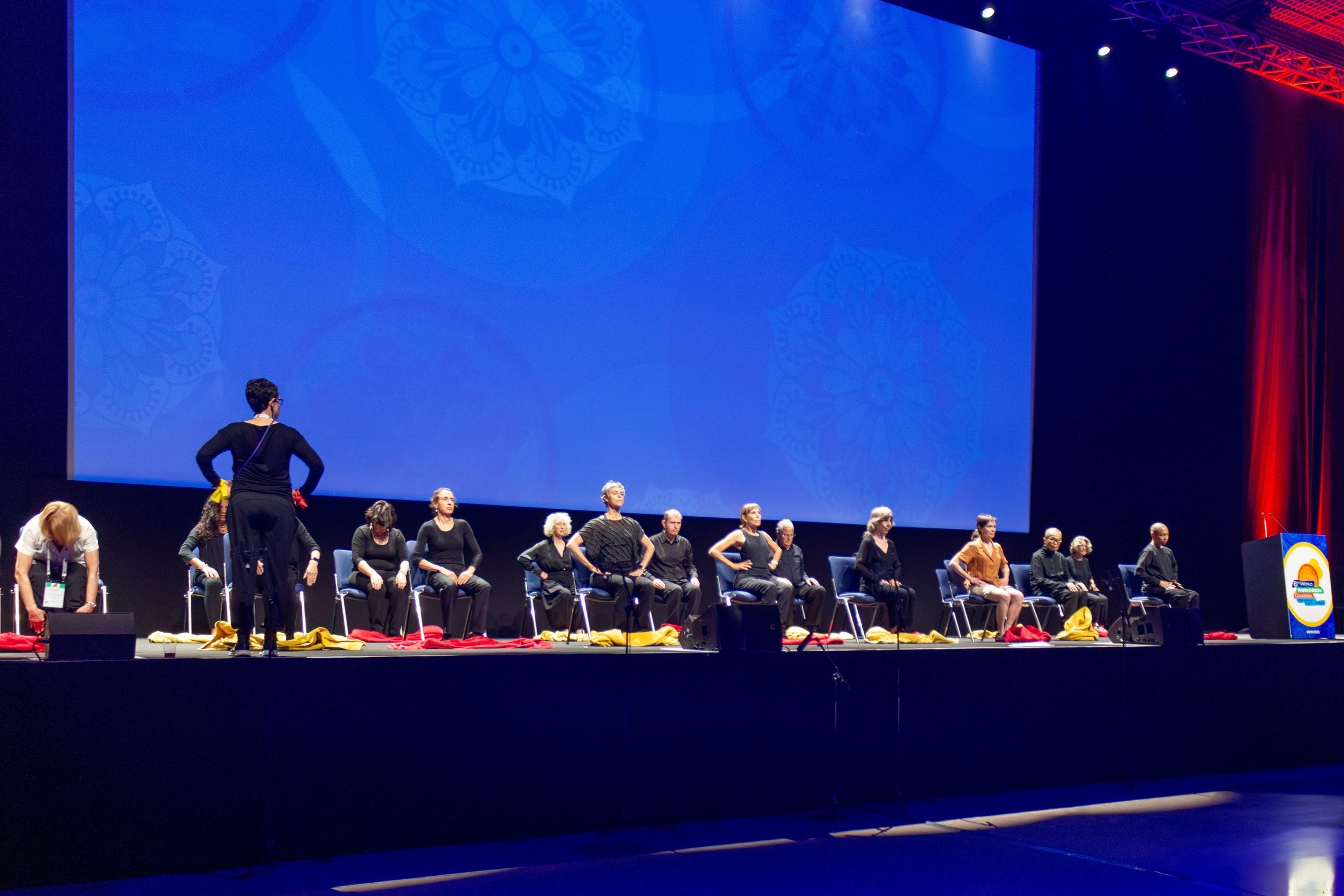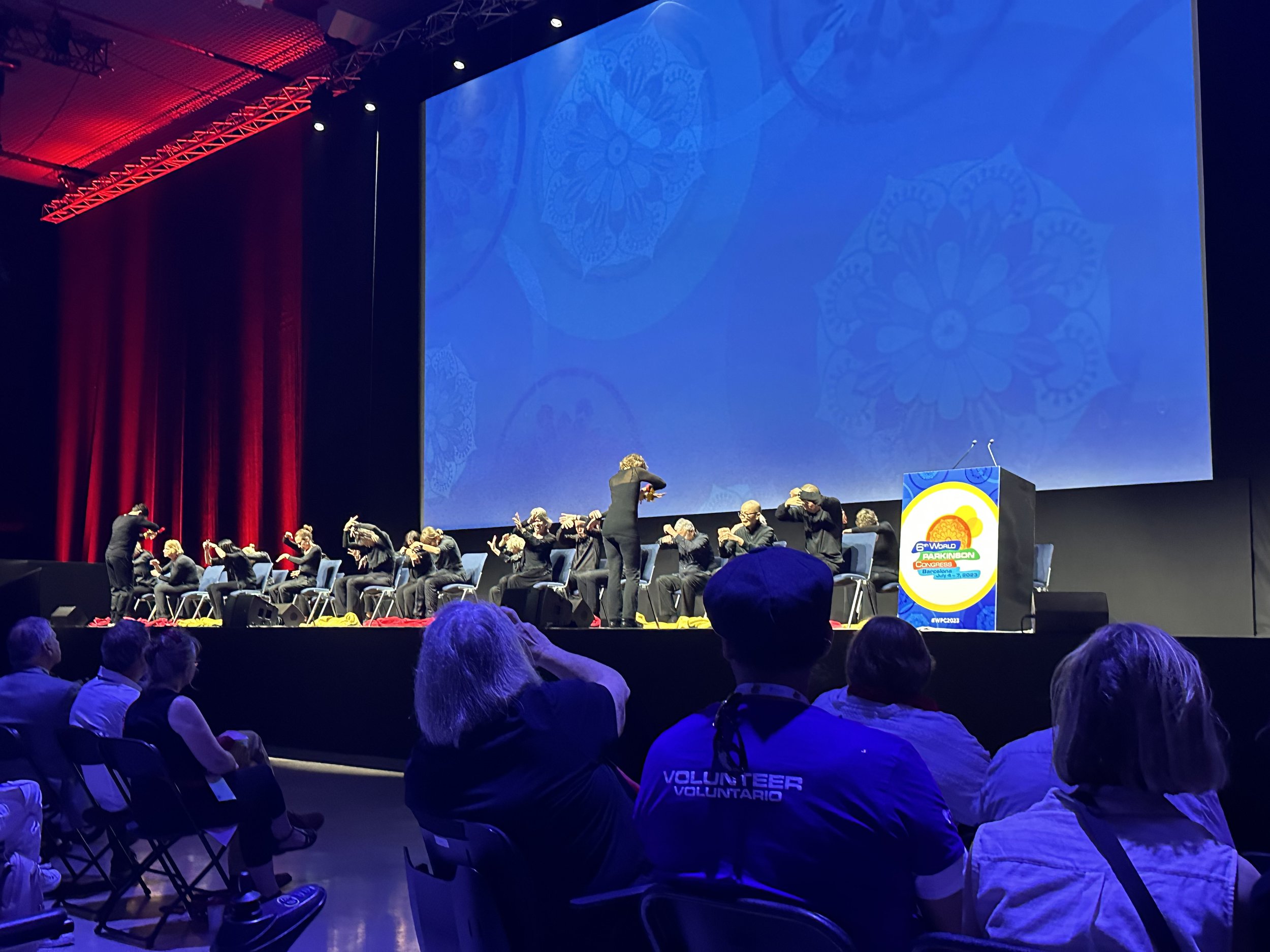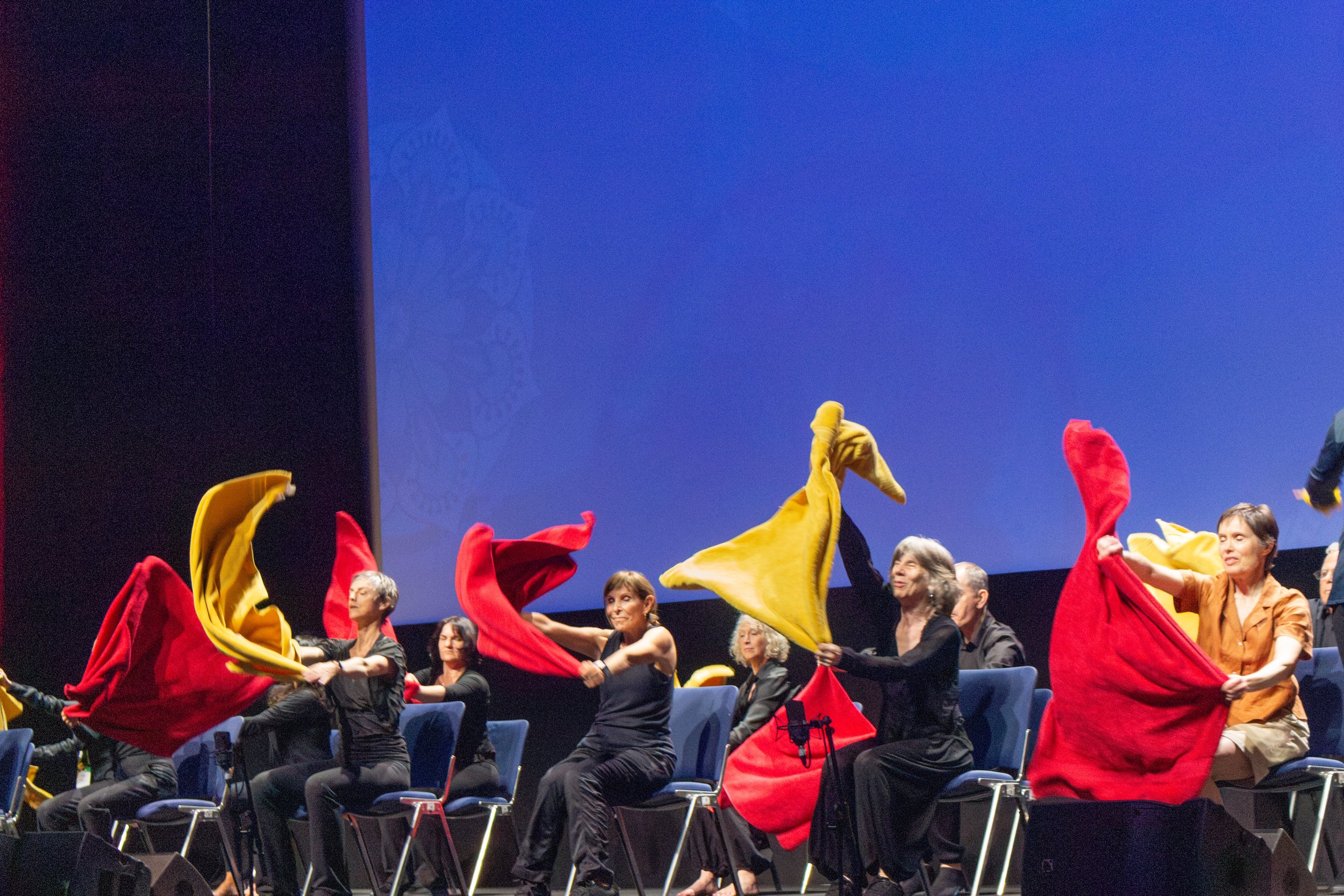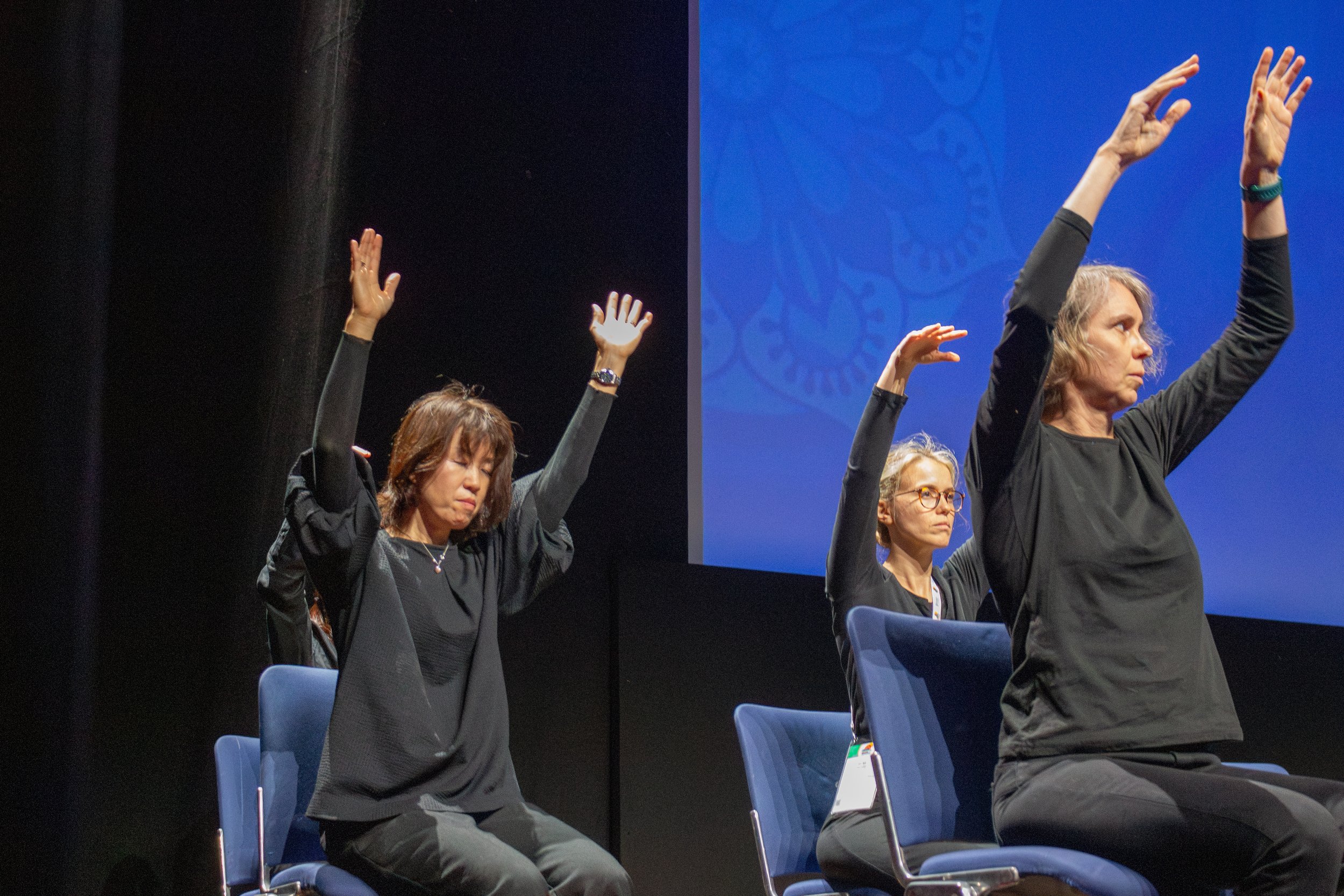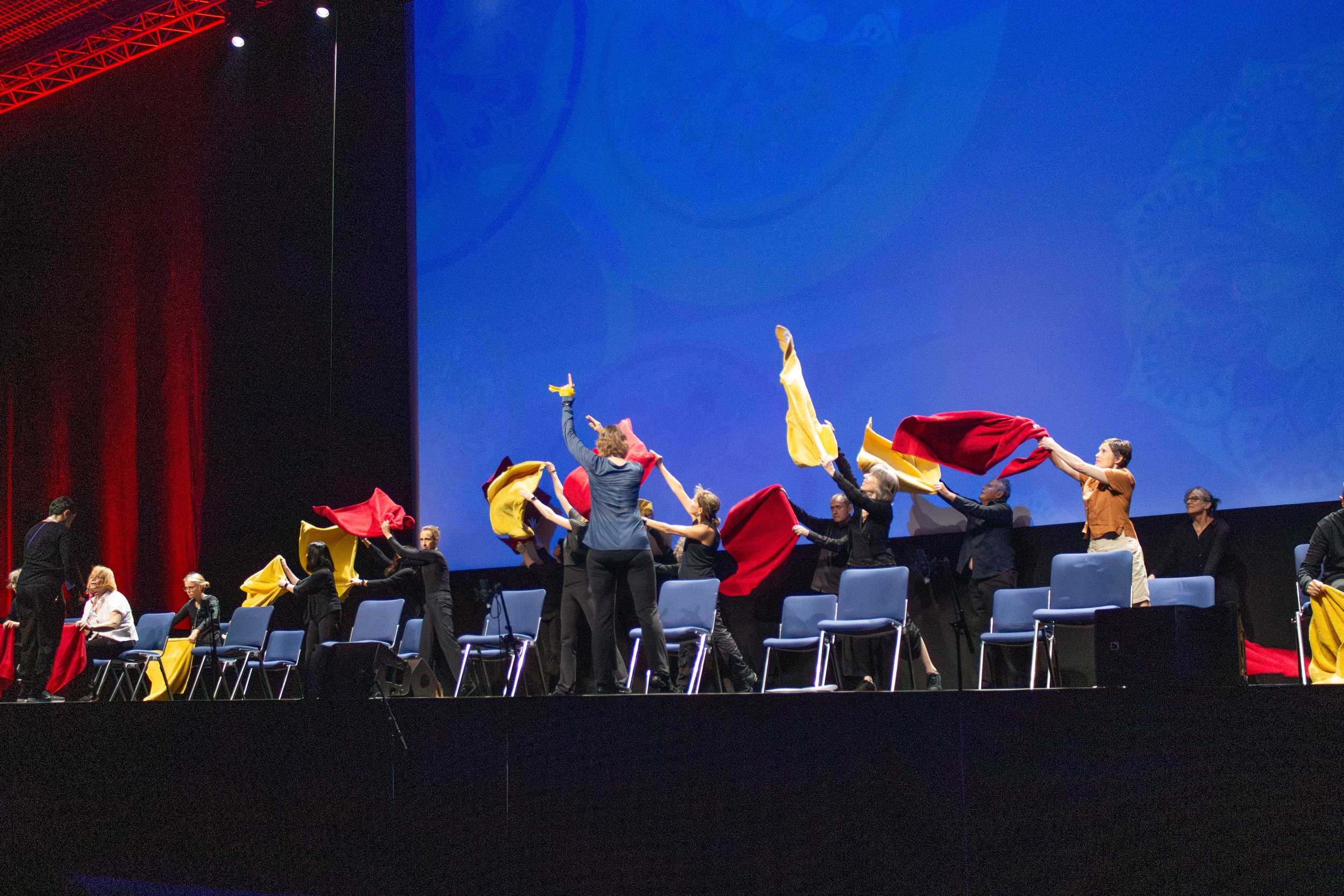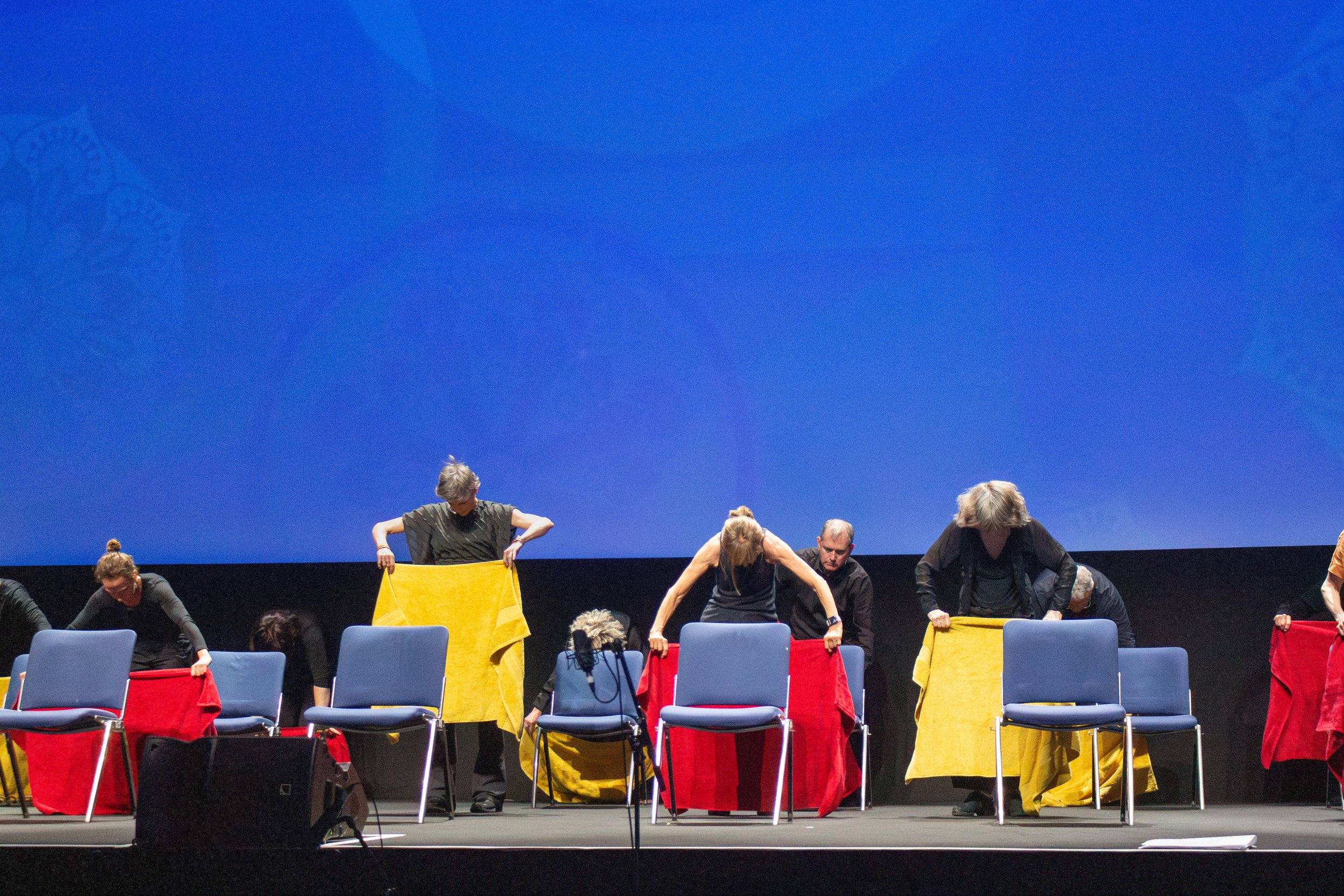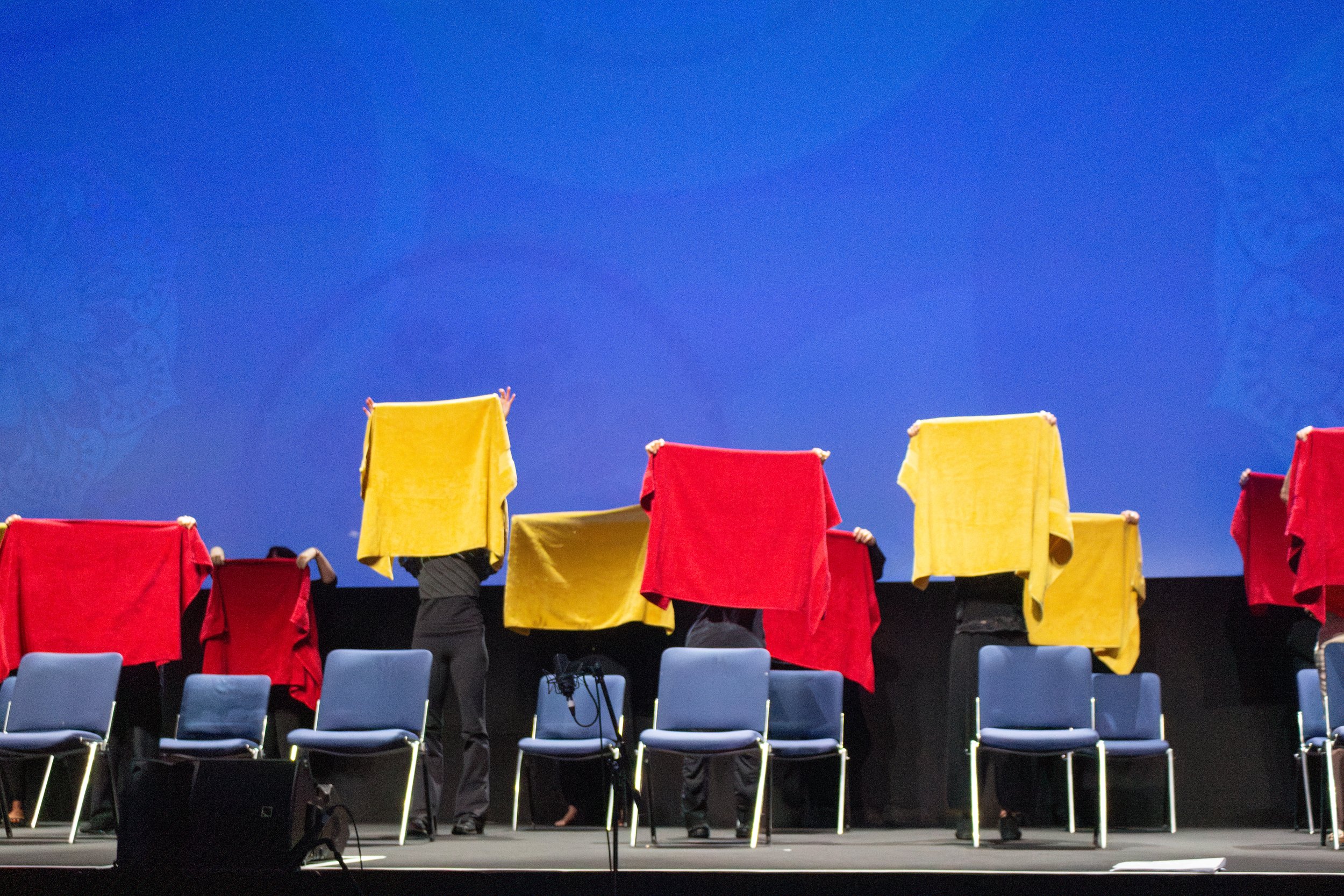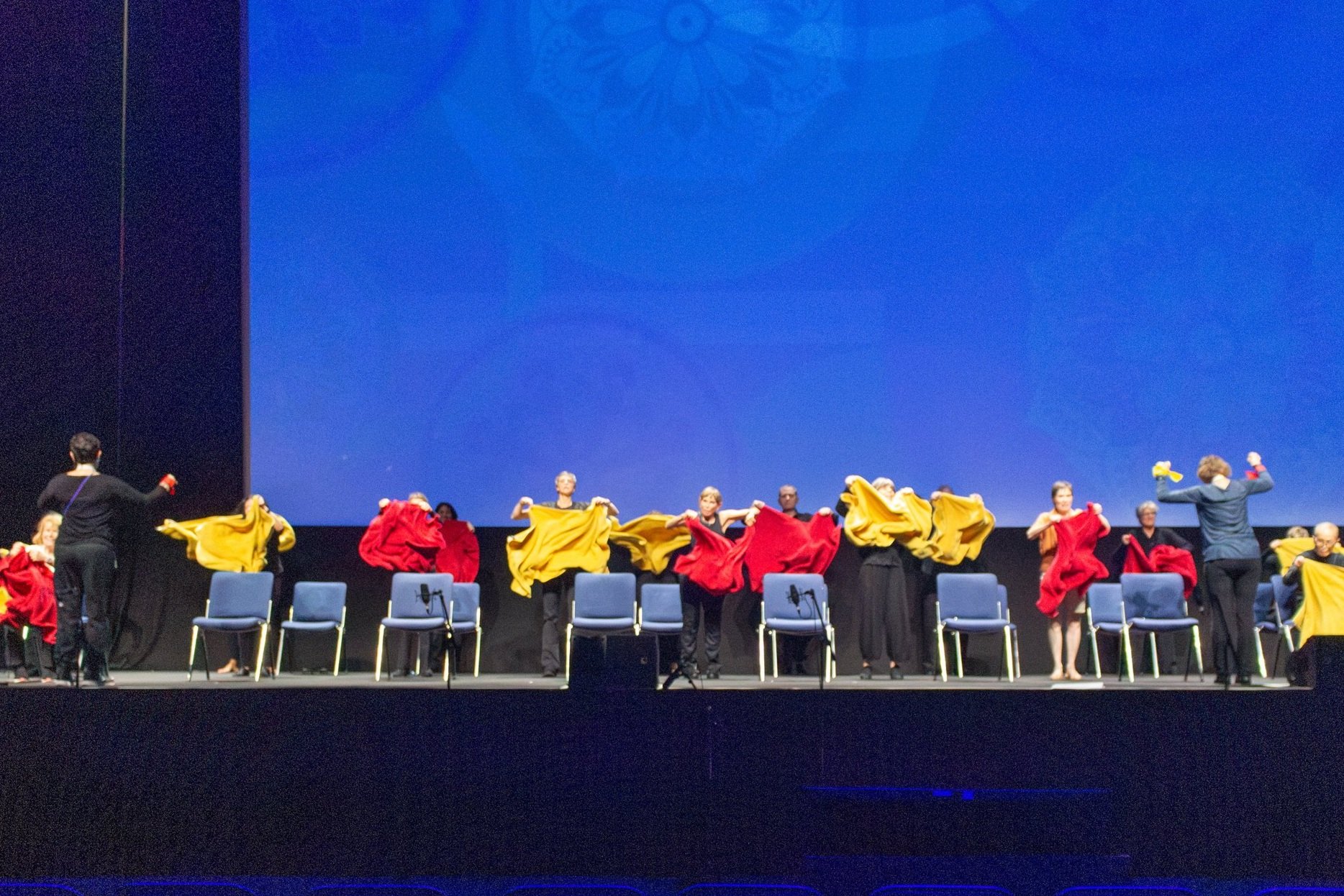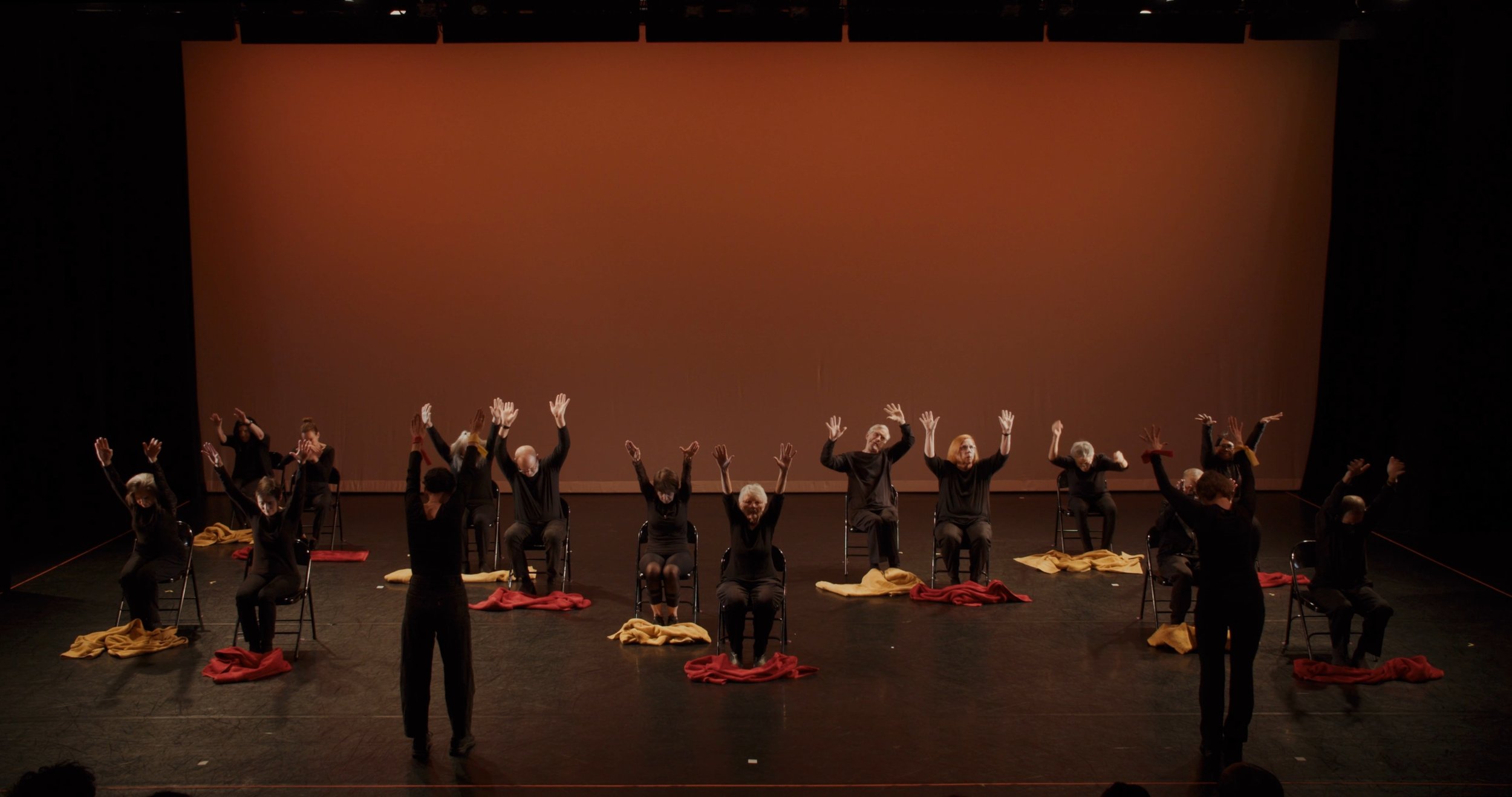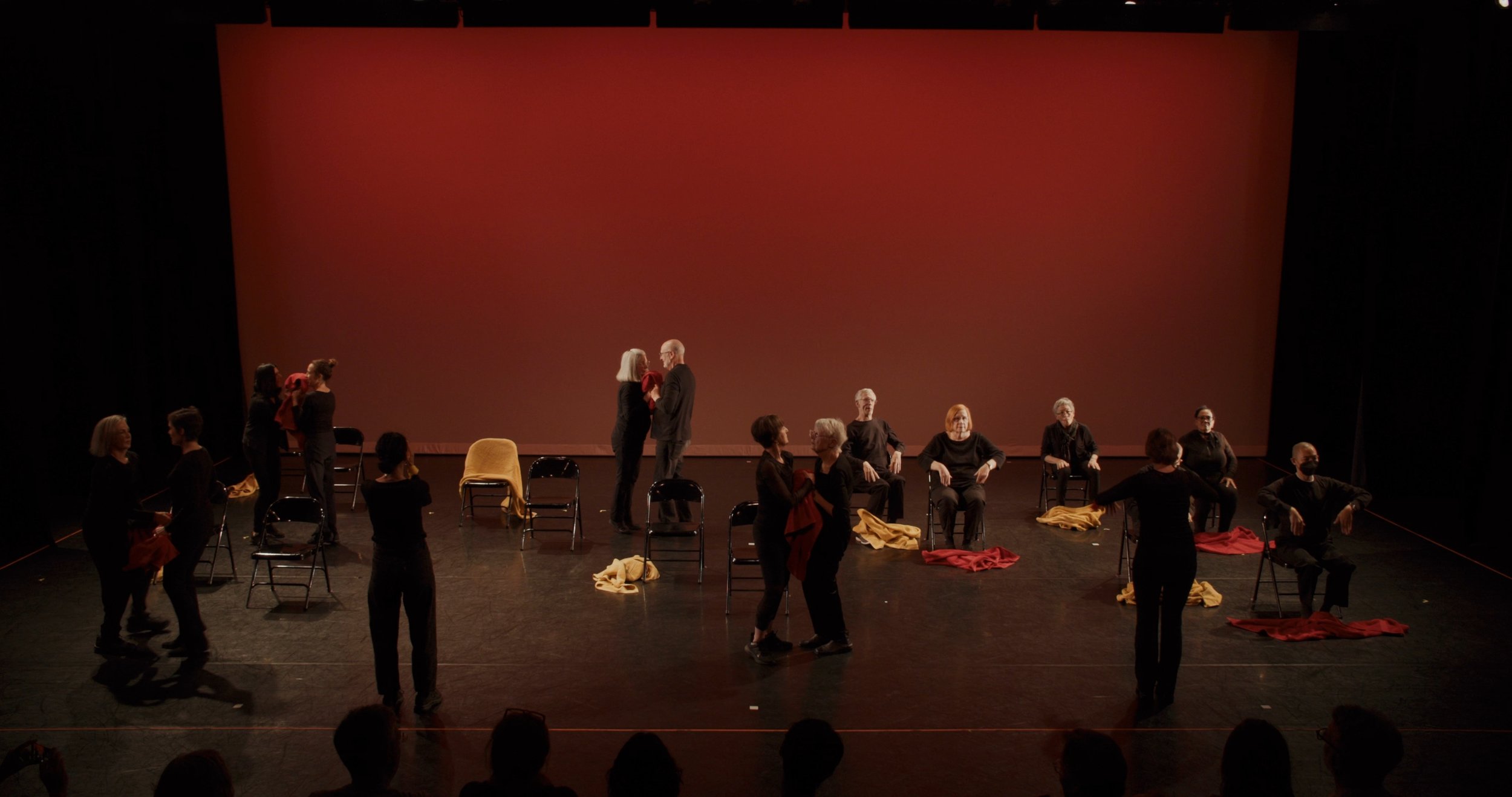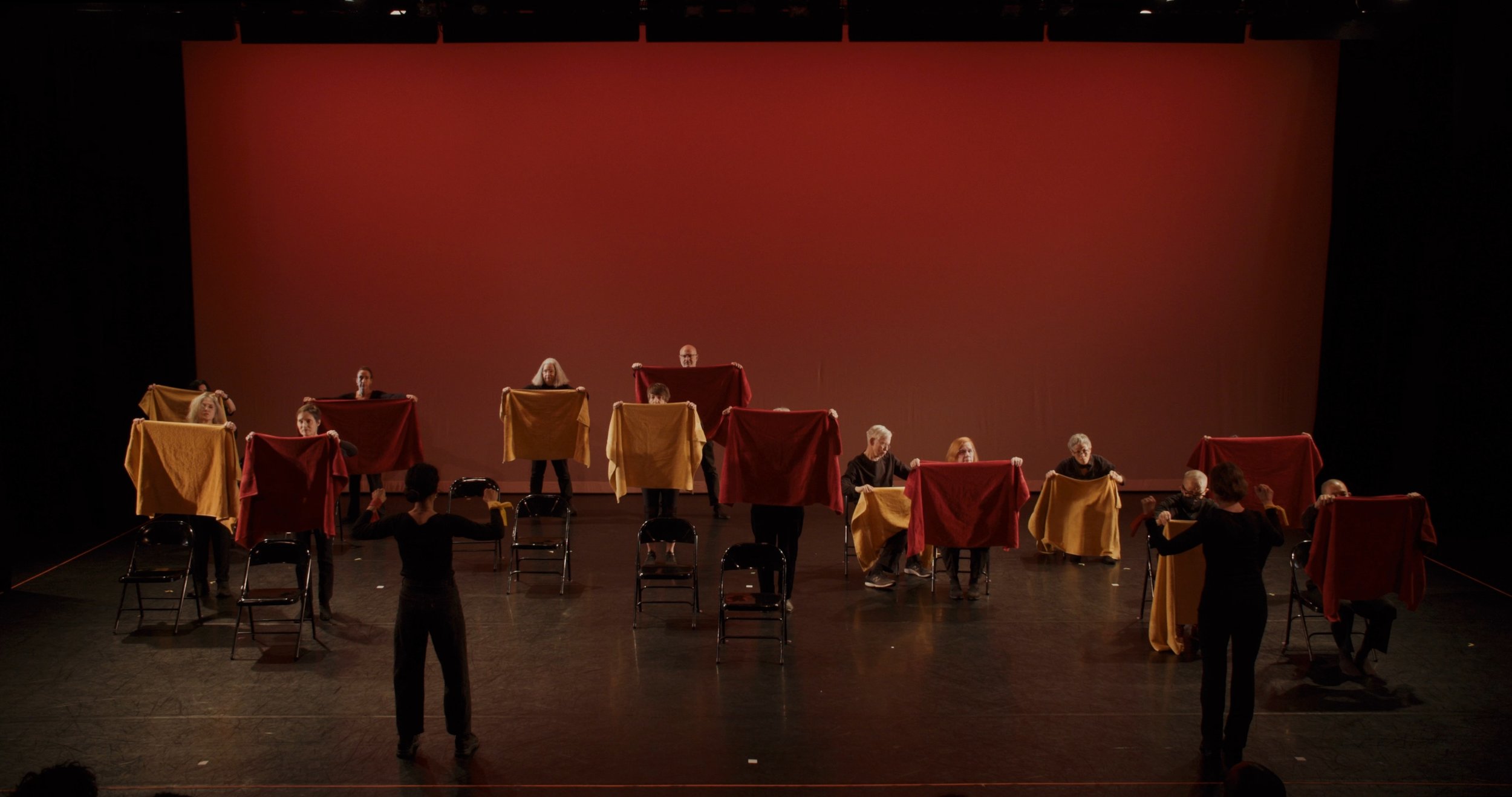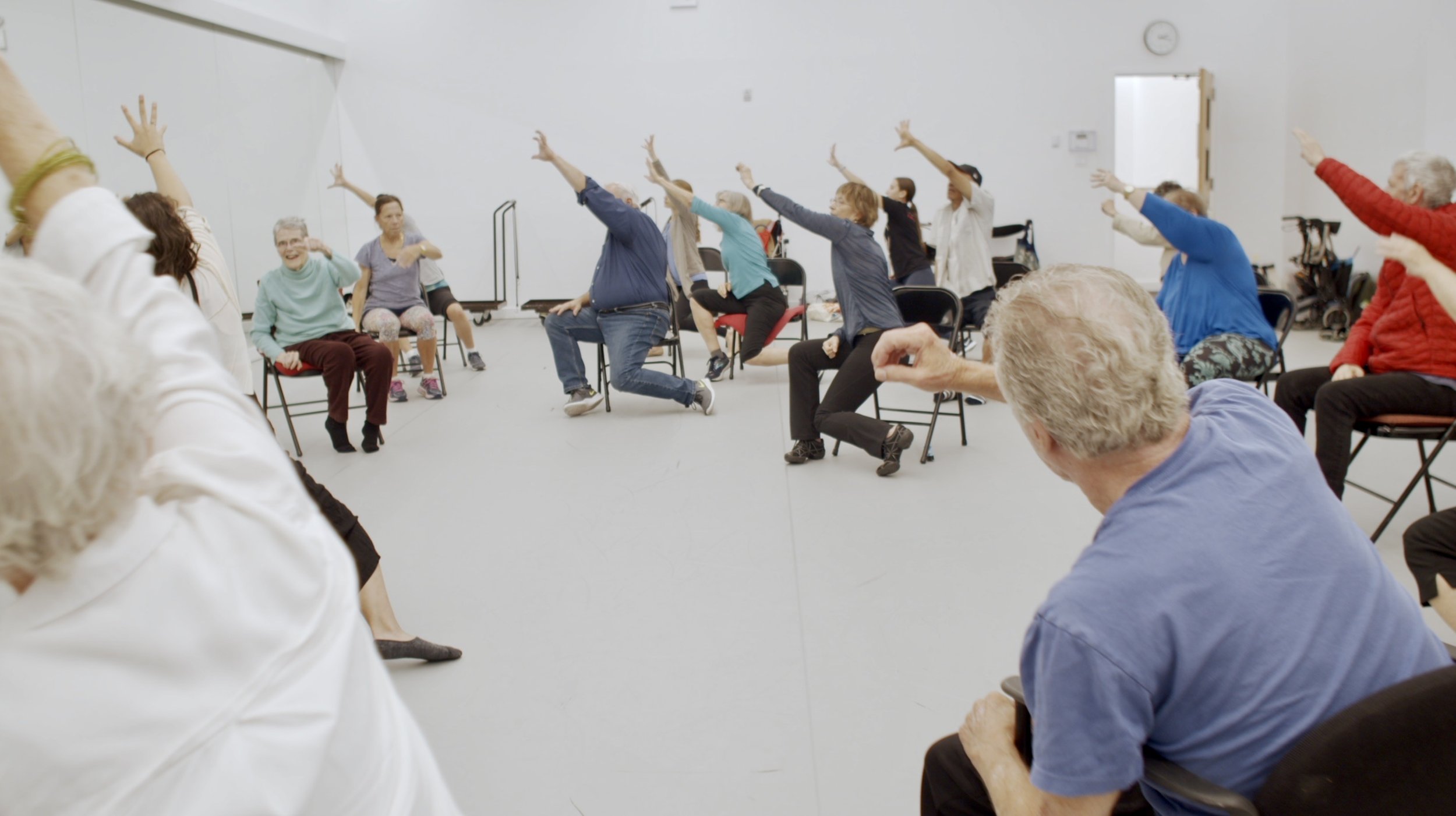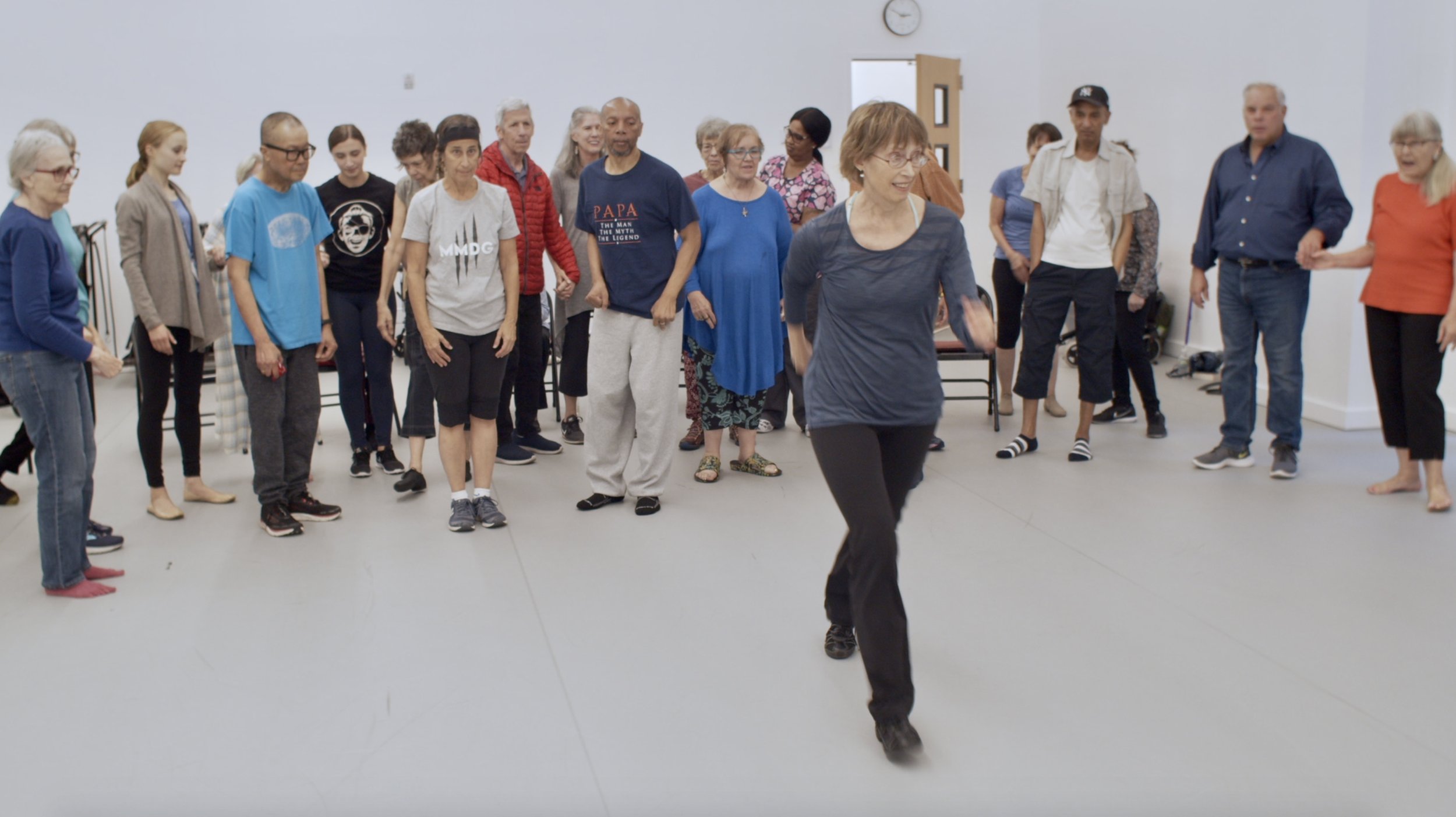Dear Friends,
2023 was a year of momentum for PD Movement Lab.
People with Parkinson’s regained control of their walk through Gaitkeeping, the Lab’s new walking therapy. Medical experts, care partners, and patients discussed how to cultivate patient agency in panels and interviews. And PwPs from around the world came together to perform ambitious choreography in front of thousands of people.
Each of these developments relied on a mix of two things: new digital approaches pioneered by the Lab, and the resolve of PwPs to help themselves. People with Parkinson’s can do more than most people give them credit for. Often we can do more than we give ourselves credit for. Improving our walk, reworking our identity in the face of the disease, learning and performing complex dances—these are all things we can do primarily on our own. We just need a small amount of high-quality guidance to unlock our potential.
I say this while also accepting the unpredictable, sometimes unfair advance of the disease. This year I continued to struggle with my voice despite my best efforts, and some people in my circle did not get better. Yet in many ways it is these people, the people who still show up to my class, participate in my dances, and make the effort to stay connected despite the increasing obstacles they face, that inspire me the most. They show me resilience, and they make me believe in a meaningful future whatever Parkinson’s brings.
So as the year wraps up, I thank them, I thank the earlier-on PwPs who put their trust in me to help them stay mobile, and I thank all of the Lab’s wonderful partners for the confidence they show in PDML. I hope you enjoy reading about everything that has gone on, and that together we can create an exciting 2024!
Yours,
Pam
PD Movement Lab 2023
Year in Review
Gaitkeeping
Late this year the Lab began to roll out a new walking therapy called Gaitkeeping. Gaitkeeping is a methodology PwPs can use to better coordinate their walk, and prolong their independence. It involves learning to analyze how PD affects a walk, and applying a progression of movement strategies to counterattack these effects and fortify healthy gait patterns.
People learn Gaitkeeping through an online course, and practice it on their own, or with the help of the Gaitkeeping app.
Right now we are gradually opening Gaitkeeping up to the public. If you would like to be one of the first to try it, click the button below and fill out the form.
Gaitkeeping
at the World Parkinson’s COngress
In April the World Parkinson’s Congress, one of the foremost Parkinson’s conferences in the world, recognized the Gaitkeeping pilot study, which we ran last year, as a leading paper in the Congress’s “self-management and empowerment” category.
Pam and Colin presenting the Gaitkeeping abstract
I presented the Gaitkeeping study at the Congress in Barcelona, with my son Colin. Over the past several years, Colin has spearheaded the conversion of my work into accessible digital formats, leading the development of the Gaitkeeping course and app, and finding ways to make my choreography more accessible to PwPs in a hybrid world.
“Red, Yellow, Black”
In early July the Lab brought together 25 PwPs and care partners from eight countries and four continents to perform the dance “Red, Yellow, Black” as part of the 2023 World Parkinson’s Congress. The dancers performed in the opening ceremony of the Congress in Barcelona in front of thousands of the world’s top doctors, researchers, and patient advocates.
The dancers learned “Red, Yellow, Black” remotely through a web tutorial, and then had only two in-person rehearsals to learn how to perform the piece together. When they took the stage, the technicians started the music at the wrong time, throwing everyone (mostly me) into a frenzy. We quickly got them to reset the music, and the dancers pulled off a performance beyond anything they did in rehearsals!
Performers: Craig Miller (England), Selma Pelaez Hervas (Spain), Whitney Chapman (United States), Catarina Godinho (Portugal), Nina Juncker (Germany), Sora Maruyama (Japan), Mie Maruyama (Japan), Sabine Woertman (Netherlands), Rachel Lee Whiting (United States), Linda Berghoff (United States), Linda Tickle-Degnen (United States), Chris Degnen (United States), Mel Brierley (England), Josefa Domingos (Portugal), Jan Rose (United States), Margie Alley (United States), Pam Quinn (United States), Manny Torrijos (United States), JS (United States), Clara Kluge (United States), Beatriz Navarro (Argentina), Suzan Moss (United States), Pat Beilman (United States)
Red, Yellow, Black in NYC
Before performing the piece in Barcelona, the Lab assembled 14 PwPs and care partners from across NY State to perform “Red, Yellow, Black” as part of the 2023 Mark Morris Dance Center showcase. These dancers, who also learned the piece remotely, faced a different set of challenges.
As the first people to perform “Red, Yellow, Black,” they had to quickly adapt to large choreographic changes within a couple days, and then perform the piece five times across a grueling three day schedule. When I made the choreography, I wondered if it would be too challenging. I could not have been more wrong. The grit, adaptability, and energy the dancers gave to the piece made it a joy to watch.
Performers: Eloise Jackson, Patricia Beilman, JS, Manny Torrijos, Margie Alley, Jan Rose, David Garlow, Ellie Garlow, Carol Enseki, Indra Nunez, Jackie Bernard, Johanna Kopp, Nancy Eson, Jud Eson
Interviews, Panels,
Masterclasses
an interview on patient agency
In a wide-ranging interview, Melanie Dizon, Director of Education at the Davis Phinney Foundation, asked me about how I’ve navigated every stage of my PD, from my initial diagnosis to where I am today. We touched on many topics, but the overarching theme was how throughout my time with the disease, I have listened to my own body, and trusted and acted on my perceptions of how the disease is affecting me. Sometimes this meant collaborating with my doctors, other times it meant pushing back when they said things that did not make sense to me. You can watch the full interview below:
Creativity & Parkinson’s
As part of the WPC I participated in a panel discussion about the intersection of creativity and Parkinson’s. During my time to speak, I focused on my experience creating “Welcome to Our World” for the 2010 WPC. It was the first time I had choreographed anything since I had been diagnosed 14 years earlier and abruptly left the dance world. Making the piece reconnected me with who I was before I had Parkinson’s, and allowed me to integrate my identity pre-Parkinson’s with the person I had become over the past 14 years. I believe the creative process—which is a journey of self-exploration where you define what you value—can be equally therapeutic for anyone. You can watch “Welcome to Our World” below:
OT Masterclass
“Healthy aging and parkinson’s'“
Together with David Leventhal, Program Director of Dance for PD, I returned to Tufts University to run a masterclass for their Occupational Therapy PhD program. I continue to believe occupational therapy’s aim of helping people live not just functional lives, but also purposeful ones, positions it as one of the best approaches to Parkinson’s Disease management. OTs are an untapped resource in the PD community.
Rutgers Dance Parkinson’s Symposium
At the Rutgers Dance Parkinson’s Symposium Colin and I gave an extended presentation on the results Gaitkeeping study, and gave live demonstrations of the program’s effects. We also talked about how patient feedback from the study shaped the design of the Gaitkeeping app.
PD Movement Lab Classes
In PD Movement Lab classes students continued to explore multidimensional movement through dance, while also zeroing in on practical strategies to improve mobility.
Classes ran year-round in NYC as part of the Dance for PD and JCC Manhattan programs, while also making appearances at the World Parkinson’s Congress in Barcelona, the PMD Alliance Convention in New Jersey, and Rutgers University’s Integrated Dance Center.
The Lab also trained and brought on two new teachers: Mor Mendel and Jackie Bernard. Mor and Jackie have done a fantastic job preserving the blend of artistic expression and functional movement at the core of the PDML class, while also injecting their own personality into each session. Their success gives me hope the PDML class can expand beyond my limited capacity as a teacher, and reach and help more PwPs.
Special Thanks
This year’s recap would not be complete without acknowledging the people and organizations who support PD Movement Lab. They make everything the Lab does possible. Thank you!
Eli Pollard
After the trauma and isolation of the pandemic, going to the WPC in Barcelona felt like a homecoming. The community of passionate, caring, intelligent PwPs the conference has cultivated is second to none. Everyone should thank Eli Pollard, the Executive Director of the WPC for this.
Every three years Eli puts on the Congress with a bare-boned staff, yet somehow manages to overcome this supreme organizational challenge each time. As an attendee of the last five congresses, I can also say she makes the Congress better and more inclusive each time, and has created a model other medical conferences should follow. I want to do whatever I can to add to future conferences.
Dance for PD
Dance for PD sponsors the PD Movement Lab Brooklyn class, and provides the space and administrative support needed to run it. Over the past several years DFPD has also facilitated the Lab’s choreographic ventures by supplying the Lab with rehearsal space and opportunities to showcase the work.
Dance for PD is an organization consistently at the forefront of creating community through dance, and I am proud to partner with them. Thank you David Leventhal and Maria Portman Kelly for all the work you do. I am excited to see what next year brings.
Jewish Community Center of Manhattan
The JCC in Manhattan sponsors the PD Movement Lab Manhattan class, and provides the space and administrative support needed to run it. Thank you JCC and Caroline Kohles for supporting PDML and the Upper West Side community at large!
I also want to give a special shout out this year to Whitney Chapman, the programming manager at the JCC. This year she not only provided critical support to PDML in NYC, but she also attended the WPC and helped conduct the performers in “Red, Yellow, Black” at the WPC.
Rutgers University
For the past two years Rutgers University has been a key research partner for the Lab. The Gaitkeeping pilot study was backed by a dance department at the forefront of integrating meaningful movement into the health system, and a brilliant Parkinson’s researcher and psychiatrist. Thank you Jeff Friedman, Natalie Schultz-Kahwaty, and Roseanne Dobkin for your thoughts and work.
Ping Pong Parkinson’s
While I have always loved ping pong, it has only been this year that I have found new friends through it. I am always thankful to other PwPs who dedicate their time and resources to build community, and there is no better example of that then the two Ping Pong Parkinson’s organizers Jan Rose and Margie Alley. They are both true athletes and fun people. If you are in the NYC or Westchester area I encourage you to attend one of their events. The atmosphere is casual, there are people of all levels, and there are even coaches who can help you improve.




